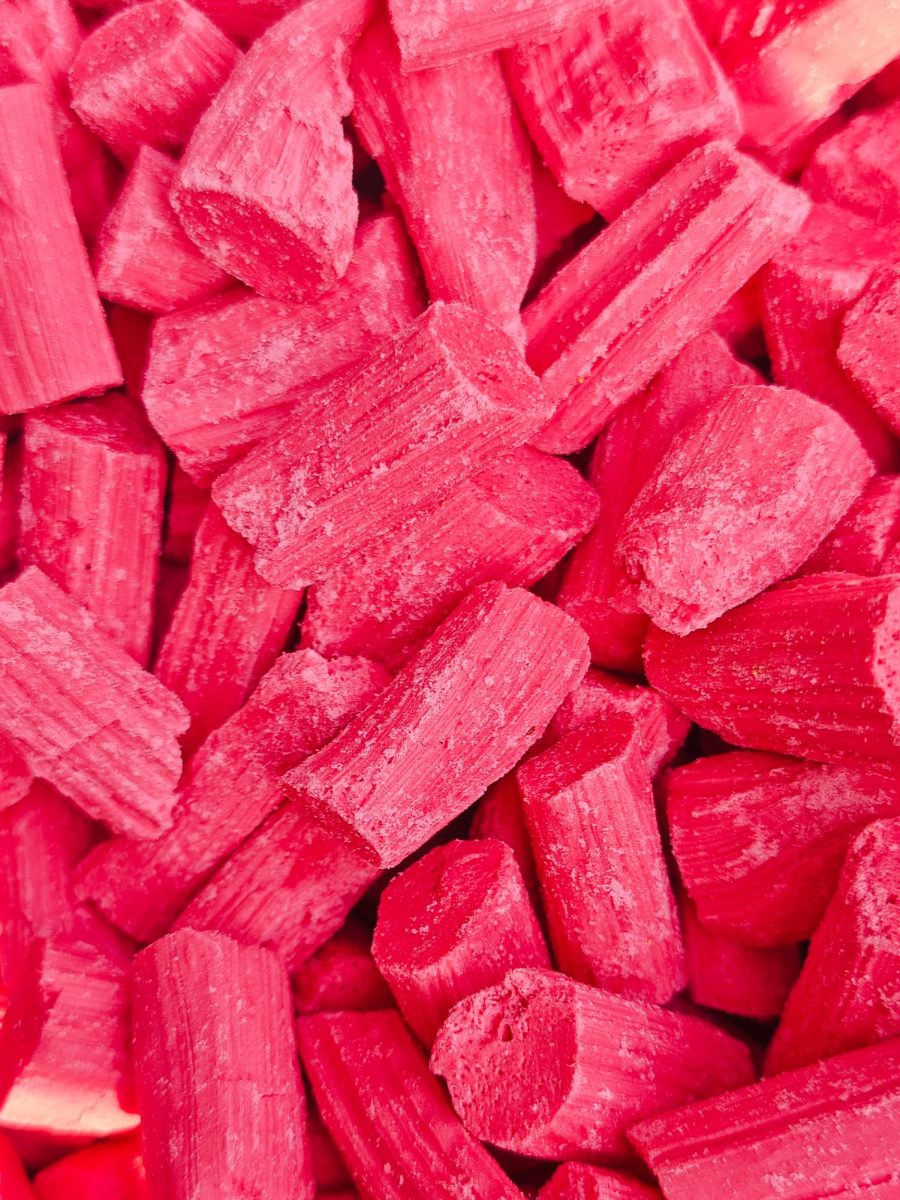Unwrapping a Ring Pop, its vibrant berry blast and strawberry flavors taste as saccharin as they look. However, the ingredient label confesses a malignant secret — Red Dye No. 3. In 1990, the U.S. Food and Drug Administration (FDA) mandated a ban for Red Dye No. 3 in cosmetics and topical drugs. Yet the ban on digested products did not happen until Jan. 15, 2025.
For 35 years, a synthetic color dye derived from petroleum and respectively known as Erythrosine was proven to cause behavioral disorders, cancer, and abnormal thyroid activity. More commonly coined as Red Dye No. 3, Erythrosine is a color additive that was approved by the U.S. Food and Drug Administration (FDA) in 1907 but has now nationally repealed into a prohibition of the dye.
Registered dietitian and certified School Nutrition Specialist for Chartwells at Ann Arbor Public Schools (AAPS) Sarah Mason did not find the declaration of the Red Dye No. 3 ban to hold any shockvalue.
“Rumors about this ban had been circulating for a while,” Mason said. “So I wasn’t surprised when it was officially announced.”
According to The Center for Science Public Interest (CSPI), Red Dye No. 3 is found in over 9000 products — some of which include the popular snacks such as popsicles, Maraschino cherries, and candy for the lush, vibrant color it provides.
“At this point, nothing sold by Chartwells at AAPS, in the cafeteria or in school stores/snack bars contains Red [Dye] No. 3 but some schools do have school stores/snack bars that are operated by outside groups such as PTOs (Parent Teacher Organizations) or clubs,” Mason said. “We, at Chartwells, do not have control over what they choose to sell in their operations so that will be up to those groups and their supervisors as to how they handle the removal of any products in question.”
In Clague’s snack bar, which includes a plethora of chips, ice creams, and other varieties of packaged foods, all do not contain Red Dye No. 3. Additionally, the other additives found in those snacks, like Red Dye No. 40 and Yellow Dye No. 5, might have some beneficial properties. However, the bright red also heeds a warning to all consumers.
“Some of the health concerns for Red Dye 3 that contributed to the recent regulatory actions include links between Red Dye [No.] 3 consumption and hyperactivity in children, thyroid dysfunction, and possible inflammatory responses in the brain,” University of Michigan alumn and dietitian Wa Na Chun said. “I encourage consumers to check ingredient labels if they wish to avoid this additive and consider opting for products that use natural colorants, such as beets or tomato powders, for a similar aesthetic appeal. “
While Chartwells affiliated food products in Clague are all confirmed to not carry the synthetic food dye, there is no guarantee of the community’s complete evasion of Red Dye No. 3 from other independent sources. Many students bring their own snacks and treats from home. Since the news of the ban, Chartwells itself has been doing its own efforts to prevent consumption in other locations besides AAPS.
“We are actively collaborating with our manufacturer partners and product sourcing teams to assess the status of Red Dye No. 3 in our supply chain and to develop a plan for its removal,” Chartwells said.
A study conducted in 1988, yielded results that displayed the dangers of Red Dye No. 3. For 19 weeks, 4 percent of Red Dye No. 3 was administered into male Wistar rats to see the effect of the color additives. On week four, a thyroidectomy — surgical excision of the Thyroid gland — was performed on the rodents. By the last week, the outcomes of the experiment showed the rats had a growth of thyroid tumors by 91 percent from exposure to Red Dye No. 3.
“I think, as a dietitian I inherently am suspicious of anything synthetic or artificial being added to foods,” Mason said.
In an article by the FDA on the safety of color additives, it is stated how “The FDA does not approve color additives that the agency has found to cause cancer in animals or humans.” But the policy established has not been upheld until a petition driven by CSPI in 2022 had led to the appropriate ban of Red Dye No. 3 in foods, beverages, supplements, and oral drugs.
“I am a huge proponent of scientific research and literature so I believe there is a great deal of investigation that needs to take place into many of these products before anything can be decided,” Mason said. “In the case of Red Dye No. 3, there was significant enough evidence to warrant a ban, which I believe was the right decision.”
Food manufacturers have until Jan. 15, 2027 to omit Red Dye No. 3 in their products, while drug manufacturers have until Jan. 15, 2028. Prior to those dates, it is recommended to avoid foods that contain the color additive.
“I think it is important to acknowledge that some synthetic or artificial additives can have benefits,” Mason said. “It’s impossible to put out a blanket statement that something is always good or always bad.”
To find more information on the Red Dye No. 3 ban and the FDA’s policy on color dyes, go to their website at fda.gov.








